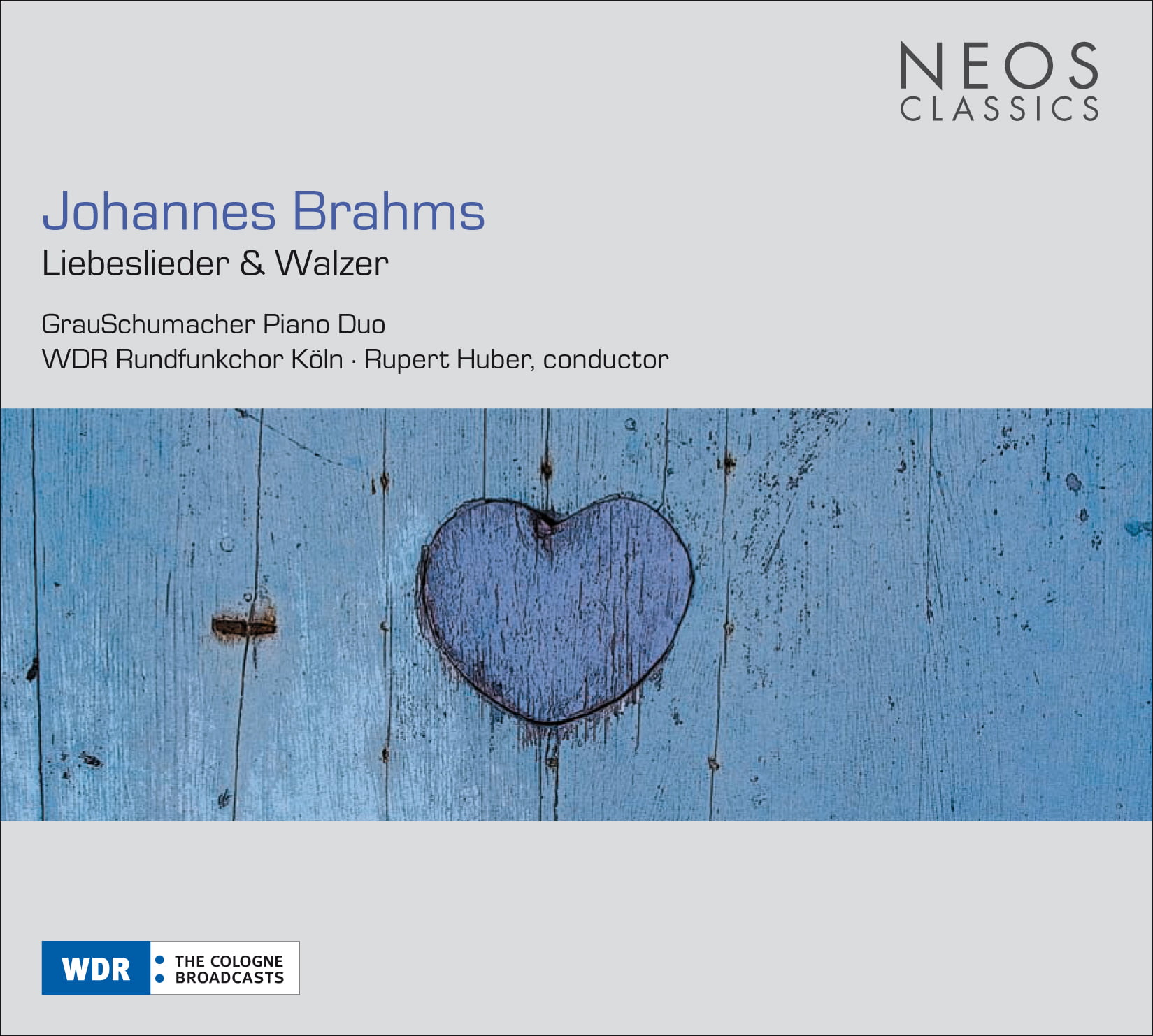infotext:
Fleeting waltzes as ›enduring music‹ »Unfortunately not from me«, Johannes Brahms once wrote under the opening bars of the waltz On the Beautiful Blue Danube, and there are numerous testimonies to Brahms' admiration of the waltz king Johann Strauss and the mutual respect. The waltz was not only a concise idiom of the Habsburg Imperial and Royal capital Vienna in the 19th century, but is still its symbol today. For Brahms, who was increasingly tied to Vienna from 1863, the composition of waltzes meant not only a homage to his new adopted country, but also a process of musical assimilation. The famous Viennese music critic and Brahms apologist Eduard Hanslick described this in the ›Allgemeine Musikalische Zeitung‹ in 1866, referring to the waltzes op. 39 for piano four hands dedicated to him: “Brahms and waltz: the two words look at each other in astonishment on the delicate title page. The serious, silent Brahms, the true disciple of Schumann, North German, Protestant and unworldly like this one writes waltzes? One word solves the riddle for us, it says: Vienna. The waltzes by Brahms are also a result of his stay in Vienna, and are truly of the sweetest kind. Not for nothing did he expose his body to the light, pleasant air of Austria year and day - his waltzes know how to tell about it afterwards. Far from Vienna, the Strauss waltzes and Schubert's Ländler, our Gstanzel and yodels [...] must have resonated with him, along with the pretty girls, the fiery wine, the forest-green heights and whatever else. Those who share in the development of this genuine and deep […] talent will greet the waltzes as a happy sign of a rejuvenated and refreshed receptivity […]. What lovely, lovely sounds! Of course, no one will expect real dance music: the waltz melody and rhythm are treated in an artistically free form and, as it were, ennobled by noble expression.« In the elevation of the ephemeral dances to an art form, the waltzes op. 39 – like the two series of love song waltzes – correspond in a special way to Brahms' ideal of 'enduring music'. The waltzes op. 39 were composed in 1865, the two series of love song waltzes were written as op. 52 (1868/69) and op. 65 (1874/75). The vocal performance of the Liebeslieder waltzes takes up the traditional form of vocal waltzes, which were very popular at the time; Johann Strauss' An der Schönen Blaue Donau, for example, also refers in the title to the male choir on which it was originally based. The Neue Liebeslieder-Waltz, on the other hand, are less folksy antiphons than predominantly monophonic art songs; also the waltz character as the musical basic beat of each song is much less palpable, is sublimated and dissolved in an elaborate piano writing. The pianist Brahms is here, with his very own instrument, also in terms of craftsmanship and designs the piano part as a withdrawn, discreet, yet completely autonomous chamber music miniature. The texts of both series of love song waltzes selected by Brahms for setting to music come from the Polydora collection published in 1855 – a world-poetic songbook by Georg Friedrich Daumer. He was a poet and narrator of oriental-influenced formal art, which, however - unlike his contemporary Friedrich Rückert - was not scientifically founded. Daumer had presented the poems collected in Polydora as translations of Russian, Polish and Hungarian folk poetry, but they later turned out to be his own creations. The last song of opus 65 does not come from Daumer, but from Johann Wolfgang von Goethe as a demonstrative conclusion of the two waltz series: Finally, Brahms titled this invocation of the muses in the last lines of his poem Alexis und Dora. The interpretation presented here corresponds in a special way to Brahms' claim of a compositional synthesis of musical folk tone and compositional artistry. Conductor, singer and pianist have worked out an authenticity of making music, which is expressed in particular in the declamatory phrasing and articulation of the waltzes: their melodic gesture is underlined by acceleration and deceleration, the inner form is structured by obvious abphrasing and stripped of all lieder-like flourishes. This ›sound speech‹ corresponds to the voluminous and at the same time transparent timbre of the historic Erard grand piano, made in 1839 and one of the numerous ready-to-play historic keyboard instruments from the WDR piano studio. With all of these components, the present version fulfills Brahms' claim of 'enduring music' in a convincing manner; this uniquely coherent presentation authenticates Brahms' small-format waltzes as character pieces, elevating them to sometimes even abysmal images of the soul. Michael Schwalb |
program:
love songs Op. 52 (1868/69) 22:49 [01] No. 1 - Talk girl, too dear 01:18 [07] No. 7 – It was well used 01:20 [18] No. 18 – The bushes tremble 00:56 [-19 34] Walzer Op. 39 (1865) 21:48 New love songs Op. 65 (1874/75) 18:56 [35] No. 1 – renunciation, O heart, of salvation 00:50 [37] No. 3 – Fingers on each hand 01:09 [47] No. 13 – No, beloved, sit down 01:26 total time 63:48 GrauSchumacher Piano Duo |
Information package for press and sales »
(ZIP archive, 3,9 MB)
